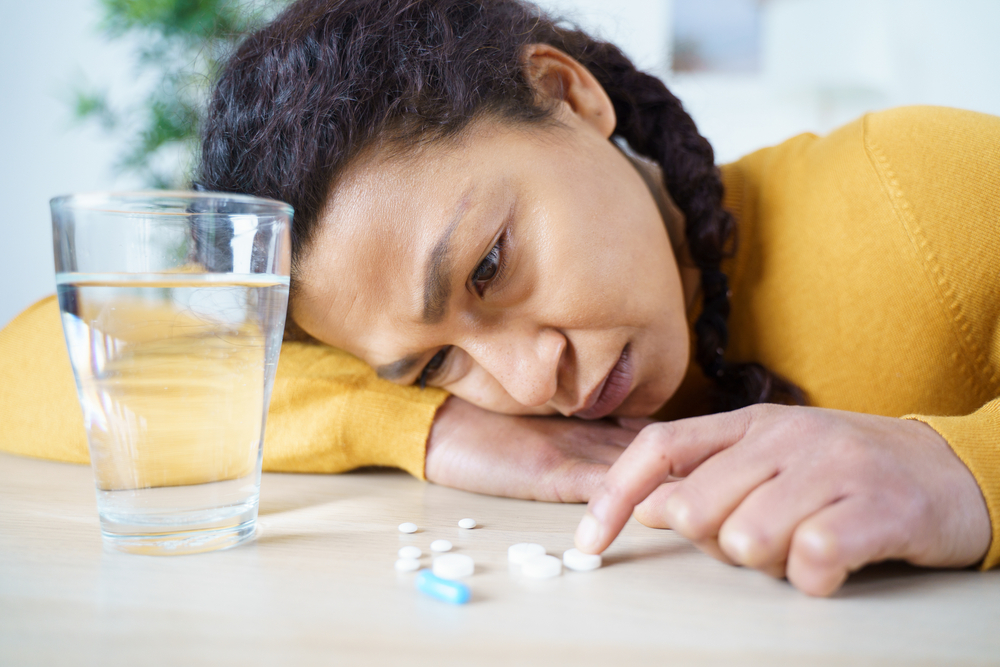The transition from oxycodone abuse to oxycodone addiction can be quick and dangerous. It can be difficult to keep a handle on the use of Oxycodone, a strong drug that provides much-needed relief to those suffering from painful or terminal conditions; however, recognizing whether someone is hooked on it may save their life. Not only is Oxycodone an expensive and debilitating addiction, but it also carries serious—and potentially lethal—consequences.
Fatal overdose rates involving a prescription opioid, such as oxycodone, increased from 14,139 in 2017 to 16,416 in 2020. Continue reading to learn more about oxycodone, how to recognize an addiction to this drug, and where to look for treatment.
What is Oxycodone?
Oxycodone is a potent prescription opioid that may be used properly to manage pain. Immediate-release oxycodone is approved by the FDA to manage moderate to severe pain, for which opioid medications are considered appropriate and for which other pain management methods are inadequate.

An individual taking an oxycodone Painkiller might receive a pill in any one of a range of sizes and colors, depending on the dose and manufacturer. Oxycodone is an active ingredient in a variety of painkillers and is available in a liquid form as well. These drugs are often administered in combination with acetaminophen, aspirin, and ibuprofen, among other substances. Some of the most popular oxycodone-based drugs are:
Percocet
Percocet, a combination of Oxycodone and Acetaminophen (the active ingredient in Tylenol), is commonly prescribed for a variety of conditions. Crushing up and snorting Percocet, like OxyContin, is one of the most common forms of substance abuse. Other methods of abusing Percocet include taking more than the recommended amount, taking the drug for longer than the prescribed length of time, and chewing or injecting the substance.
OxyContin
OxyContin is one of the most frequently abused prescription drugs. In spite of the fact that it provides long-term pain relief, many people crush and snort the drug or dissolve and inject it to bypass the time-release mechanism. This allows the individual to get the full dose of OxyContin at once.
Roxicodone
Roxicodone is an Oxycodone formulation that provides moderate to severe pain relief. It is frequently administered to patients prior to surgery to sedate or comfort them or provide around-the-clock care. It is abused, causing a quick high in those who consume it. Those who abuse Roxicodone often mash or melt down the tablets to inject or smoke them.
How Does Taking Oxycodone Make You Feel?
When taken as directed, OxyContin does not provide a high. People who are experiencing serious discomfort may feel elated the first time they take an opioid like OxyContin, but the high wears off quickly. However, if OxyContin is abused, a high will occur. OxyContin alters how the brain responds to pain. When people take OxyContin in large amounts or contrary to its prescription instructions, they experience the following:
- Emptiness
- Discouraged
- Euphoria
- Happiness
- Numbness
- Optimism
- Fatigue
- Comfort
- Pain relief
Is Oxycodone Addictive?
Oxycodone is extremely addictive. Our brains release small amounts of opioids in response to certain activities, such as exercising or eating chocolate, as well as regulating our body temperature, digestion, and emotions. When we take opioids, we naturally desire to repeat activities we enjoy, leading to an enhanced opioid concentration in our brains. On the other hand, when you take oxycodone, it causes your brain to release large amounts of dopamine, resulting in drowsiness and warmth. Although opioids do not just deal with physical discomfort, they also desensitize our emotions, making it difficult to quit oxycodone.
How Does Opioid Addiction Occur?
When you take an opioid, your brain’s feel-good neurotransmitters, endorphins, are released. Endorphins dull your perception of pain and enhance feelings of pleasure, creating a fleeting yet powerful sense of well-being. When your opioid dose wears off, you might yearn for those good feelings as soon as possible. This is the first stage of addiction.
Snorting or injecting a pill that has been crushed rather than taken orally is more addictive than taking it as prescribed. Using methods other than those prescribed to take your opioids increases their addictiveness. If you swallow an extended- or long-acting opioid pill all at once, you may accidentally overdose. Using too much of your opioid medication, or taking it more frequently than prescribed, is also more likely to lead to addiction.

The duration of time you take opioids also has an effect. Researchers have discovered that opioid medication use for more than a few days causes long-term use, which increases the risk of addiction. It’s more likely you’ll still be taking opioids a year after starting a short course. Additional issues, such as genetic, mental, and environmental factors, factor into addiction, which can occur rapidly or following years of opioid use.
Oxycodone and Co-occurring Disorders
Individuals with substance use problems frequently have co-existing mental health disorders. In some cases, untreated mental health symptoms lead to substance abuse. Common co-occurring disorders associated with oxycodone addiction include:
- Anxiety
- Depression
- Bipolar Disorder
- Self-harm
- Schizophrenia
- Polysubstance abuse
Short-Term Effects of Oxycodone Use
Oxycodone can be a very effective painkiller when taken as prescribed. However, for some people, its use even at prescribed doses may be associated with other desirable effects, such as pain relief, euphoria, sedation, relaxation, and reduced anxiety. Adverse short-term effects include:
- Drowsiness
- Headache
- Sweating
- Flushing
- Mood swings
- Dry mouth
- Dizziness
- Nausea
- Constipation
- Loss of appetite
- Muscle weakness
Long-Term Effects of Oxycodone
Long-term use of oxycodone can result in physical dependence on the drug. Physical addiction to oxycodone, like most opioids, can be incredibly powerful. According to the FDA, oxycodone is highly addictive even when used properly, and can lead to addiction. Long-term use of oxycodone can negatively impact a person’s physical and mental health and potentially lead to the following:
- Kidney failure
- Heart problems
- Liver failure
- Cognitive impairment
- Financial instability
- Legal issues
- Suicidal ideation
- Increased pressure of spinal fluid
- Swelling in limbs
- Coma
- Death
How to Recognize OxyCodone Addiction
Someone who has become addicted to or has been abusing oxycodone may display a variety of signs, including but not limited to the following:
- Decline in performance at work or school
- Self-isolation
- Poor personal hygiene
- Mood swings
- Weight loss
- Loss of interest in things once enjoyed
- Lying
- Paranoia
- Mood swings
- Decreased coordination
- Itchiness
- Borrowing or stealing money
- Participating in risky or criminal activities
- Inability to stop use
- Doctor shopping
Signs of Oxycodone Overdose
Knowing what signs to look for can help you determine when to get emergency assistance if you suspect an opioid overdose. The following signs are indicative of an Oxycodone overdose:
- Respiratory depression
- Faint pulse
- Vomiting
- Stomach pain
- Nausea
- Pinpoint pupils
- Blueish-colored fingernails and lips
- Seizures
- Unresponsiveness
Even if someone is not addicted to oxycodone, they may accidentally take too much of the drug. If an oxycodone overdose is suspected, it’s imperative to call for emergency services right away, because an overdose can lead to severe health problems or even death if not treated right away.

In the event of an oxycodone overdose, it is critical to keep the person conscious, if possible. Roll them onto their side if they are unconscious so that, if they vomit, they won’t choke. It is critical to continuously monitor the person’s breathing and heart rate to make sure that they continue breathing. If someone loses consciousness, CPR may be required. It is critical to keep an eye on someone who might have an overdose. An overdose can quickly become life-threatening.
Oxycodone Withdrawals: What to Expect
Although opioid withdrawal symptoms are frequently likened to having the flu, many opioid addicts who have undergone the procedure report that it is worse than the worst flu they have ever experienced. Withdrawal from opioids is notoriously difficult to manage without assistance. Additionally to being uncomfortable, you will also experience powerful drug cravings. Compulsions to use the drug again can be caused by both craving and withdrawal symptoms. Symptoms include:
- Irritability
- Anxiousness
- Muscle aches
- Nausea
- Diarrhea
- Excessive sweating
- Insomnia
- Drowsiness
- Restlessness
- Heart palpitations
- Fever
Although opioid withdrawal isn’t known to be life-threatening like central nervous system depressants, it may be dangerous if you don’t get enough fluids. Like the actual flu, symptoms such as diarrhea, sweating, and vomiting may cause you to dehydrate rapidly. It is critical to consume ample fluids while going through withdrawal.
Oxycodone Addiction Treatment at Asheville Detox Center
Oxycodone addiction treatment might be necessary if you or someone you care about is addicted to this powerful opioid. Addiction is a progressive disease that, if untreated, could become life-threatening. Those abusing oxycodone recreationally, as well as those suffering from addiction to the drug, are at a higher risk of potentially fatal overdoses. Medically-assisted detox is the best way to ensure the comfort and safety of someone who wishes to be rid of their addiction once and for all.

We at Asheville Detox can help you or a loved one who needs opioid detox and addiction treatment. You can finally be free of oxycodone with the help of individualized treatment plans and holistic care services. To learn more about our treatments and services, contact Asheville Detox today. It’s never too late to turn your life around, and we’re here to help you do it.







